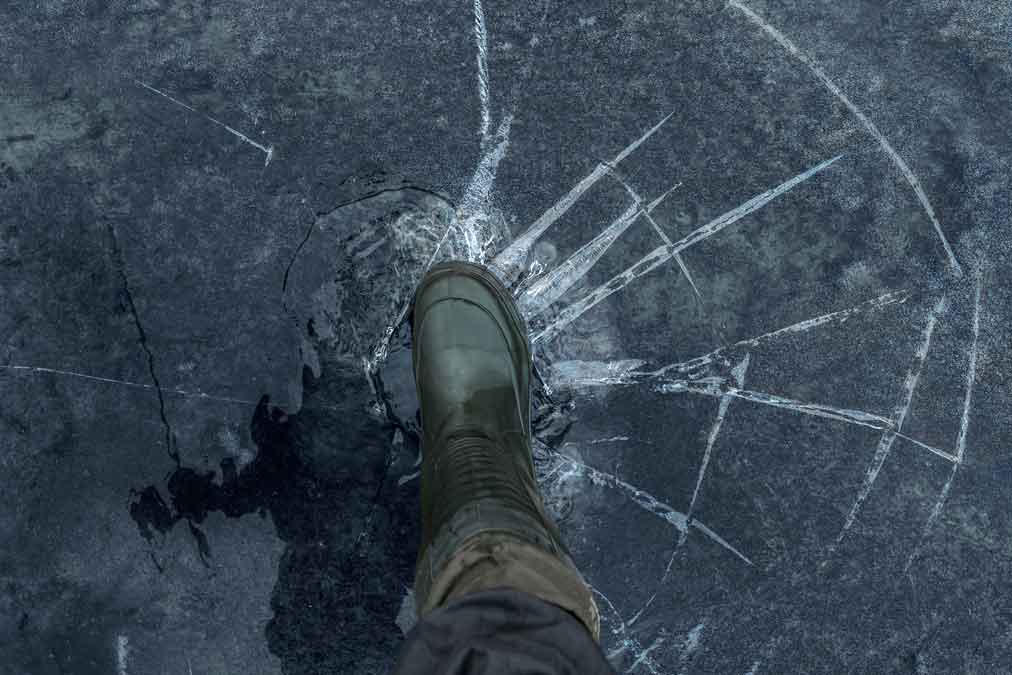M’CHIGEENG—UCCM Police Service are recommending members of the public stay off the ice until ice conditions improve. Police have observed that people are venturing on to some of the local lakes to enjoy some early ice fishing.
UCCM Police Staff Sergeant Brad Mack is strongly urging everyone to stay off the ice until the ice is a decent thickness. “I want to minimize the risk of anyone going through the ice, the last thing I want to have to respond to is someone going through the ice. Awareness and common sense should prevail.”
Last weekend numerous people had been out on Lake Mindemoya. It was reported that the ice was approximately six to eight inches thick at the time, but it was not good clear ice, explained Staff Sergeant Mack, last Friday. Since last weekend there was one day of rain and snow following that, so what may have appeared to be safe ice last weekend, may not be safe this weekend.
Another example of changing ice conditions was observed in the North Channel off Aundeck Omni Kaning First Nation. There was some ice coverage across to the islands that has deteriorated over the past few days, he continued. “Our goal is to ensure that everyone practices proper ice safety. We want people to enjoy our resources and we want them to come home as well. We really need temperatures to drop well below freezing for a good number of days to ensure decent ice forms.”
UCCM Police Service reminds citizens to take precautions on waterways during the winter months, due to the fluctuating temperatures. Help keep everyone safe by following these safety tips; don’t trust the ice, always be aware of the thickness and quality of ice to reduce risk of breaking through; where ice is checked for thickness, obey posted signs on when and where ice surface is acceptable for activities; clear blue ice is strongest. White opaque or snow ice is half as strong as blue ice. Opaque ice is formed by wet snow freezing on the ice. Grey ice is unsafe. The greyness indicates the presence of water.
The UCCM Police is also recommending that people avoid any open holes in lakes and rivers; avoid travelling on any ice in non-daylight hours. Be aware of currents and/or tides as these locations cannot be trusted to have consistent ice thickness. You should also check the ice thickness, many ice fishers will drive a motor vehicle, snowmobile, or ATV to their fishing hut. No activity should be carried out on ice less than 15 centimetres (six inches) thick. In the presence of snow on ice, the minimum thickness would need to double to 30 centimetres (12 inches). You should also wear a flotation device and cold protection suit, even if you’re fishing from shore or on thick ice. As well, carry rescue equipment. This includes ice picks, a rope, a cell phone (in a waterproof container) and a first aid kit. Other safety equipment to be considered includes a flashlight, waterproof matches/lighter, tool kit, candles and a survival blanket.
For further information on ice safety from the Canadian Red Cross, visit Ice Safety-Canadian Red Cross.




